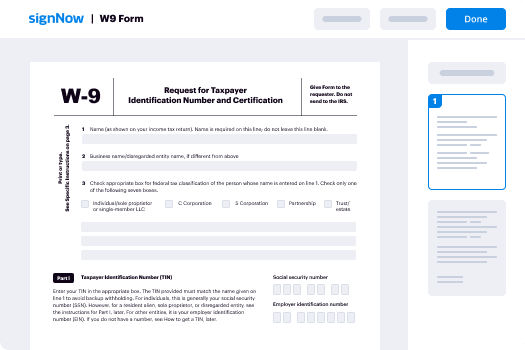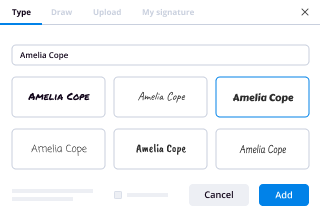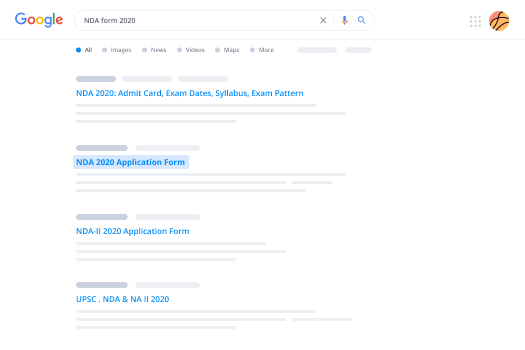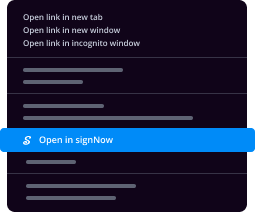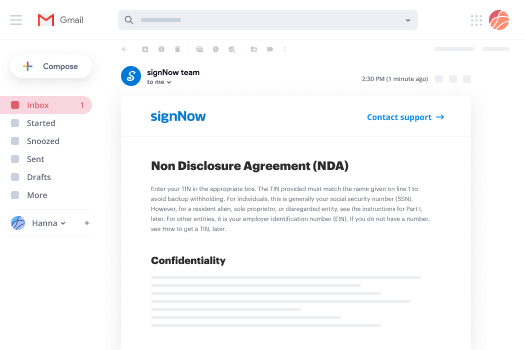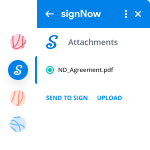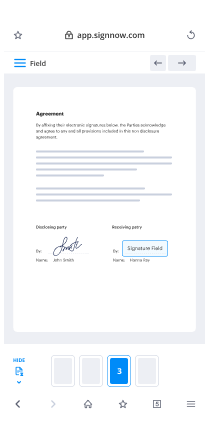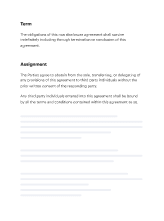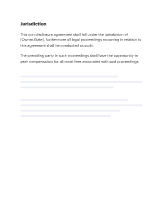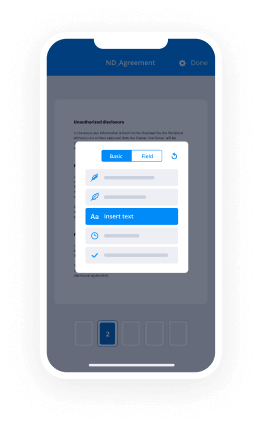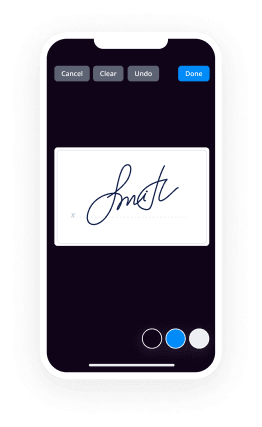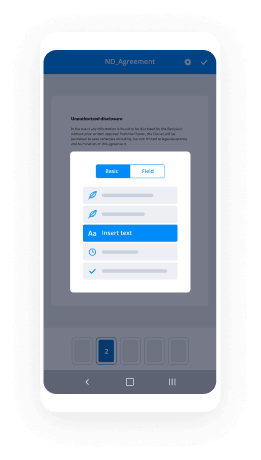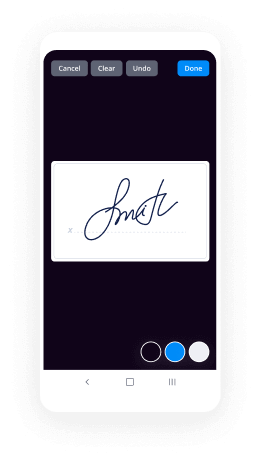Explorez Votre Signature Numérique – Questions Répondues : Signature Numérique En Java
- Démarrage rapide
- Facile à utiliser
- Support 24/7
Les entreprises qui pensent à l'avance dans le monde entier font confiance à airSlate pour le moment






Guide de démarrage rapide sur l'utilisation de la fonctionnalité de signature numérique en Java
Votre organisation est-elle prête à réduire les inefficacités de trois quarts ou plus ? Avec airSlate SignNow eSignature, des semaines d'approbation de contrat deviennent des jours, et des heures de collecte de signatures se transforment en quelques minutes. Vous n'aurez pas besoin d'apprendre tout depuis le début grâce à l'interface claire et aux guides étape par étape.
Suivez les étapes ci-dessous pour utiliser la fonctionnalité de signature numérique en Java en quelques minutes :
- Lancez votre navigateur et accédez à signnow.com.
- Inscrivez-vous pour un essai gratuit ou connectez-vous en utilisant votre e-mail ou vos identifiants Google/Facebook.
- Sélectionnez Avatar Utilisateur -> Mon Compte dans la zone en haut à droite de la page web.
- Modifiez votre Profil Utilisateur en ajoutant des données personnelles et en changeant les configurations.
- Créez et gérez votre (vos) Signature(s) par Défaut.
- Retournez à la page du tableau de bord.
- Survolez le bouton Télécharger et Créer et sélectionnez l'option nécessaire.
- Cliquez sur la touche Préparer et Envoyer à côté du nom du document.
- Entrez l'adresse e-mail et le nom de tous les signataires dans la boîte pop-up qui s'ouvre.
- Utilisez le menu Commencer à ajouter des champs pour procéder à l'édition du document et le signer vous-même.
- Cliquez sur ENREGISTRER ET INVITER une fois terminé.
- Continuez à peaufiner votre flux de travail eSignature en utilisant des fonctionnalités avancées.
Il n'a jamais été aussi simple d'utiliser la fonctionnalité de signature numérique en Java. Elle est également disponible sur vos appareils mobiles. Installez l'application airSlate SignNow pour iOS ou Android et exécutez vos flux de travail eSignature personnalisés même en déplacement. Mettez de côté l'impression et la numérisation, le remplissage laborieux et la livraison de documents coûteux.
Comment ça marche
Évaluez votre expérience
What is the digital signature in java
A digital signature in Java is a cryptographic mechanism that allows users to verify the authenticity and integrity of digital messages or documents. It employs a pair of keys: a private key for signing and a public key for verification. This ensures that the signed document has not been altered after signing and confirms the identity of the signer. Digital signatures are widely used in various applications, including software distribution, financial transactions, and legal agreements, providing a secure method of authentication in electronic communications.
How to use the digital signature in java
To use a digital signature in Java, developers typically utilize the Java Cryptography Architecture (JCA) and the Java Cryptography Extension (JCE). The process involves several steps:
- Generate a key pair using a secure algorithm, such as RSA or DSA.
- Sign the data using the private key to create a digital signature.
- Distribute the public key along with the signed data to allow recipients to verify the signature.
- Use the public key to check the signature's validity, ensuring the data has not been tampered with.
Java provides classes such as Signature, KeyPairGenerator, and KeyFactory to facilitate these operations, making it easier for developers to implement digital signatures in their applications.
Legal use of the digital signature in java
In the United States, digital signatures are recognized as legally binding under the Electronic Signatures in Global and National Commerce (ESIGN) Act and the Uniform Electronic Transactions Act (UETA). These laws establish that electronic signatures hold the same weight as handwritten signatures, provided that certain conditions are met. For a digital signature to be legally valid, it must be created using a secure method, such as those provided by Java's cryptographic libraries, and the signer must have consented to use electronic signatures. This legal framework supports the use of digital signatures in various sectors, including finance, healthcare, and real estate.
Steps to complete the digital signature in java
Completing a digital signature in Java involves a systematic approach:
- Generate a key pair using a secure algorithm.
- Create a message digest of the data to be signed.
- Sign the message digest with the private key, producing the digital signature.
- Attach the digital signature to the original document.
- Distribute the signed document along with the public key for verification.
These steps ensure that the document can be securely signed and verified, maintaining its integrity throughout the digital workflow.
Security & Compliance Guidelines
When implementing digital signatures in Java, it is essential to adhere to security and compliance guidelines to protect sensitive information. Here are some key considerations:
- Use strong cryptographic algorithms, such as RSA or ECDSA, to generate keys.
- Ensure private keys are stored securely and are not exposed to unauthorized access.
- Implement secure communication protocols, such as TLS, to protect data in transit.
- Regularly update cryptographic libraries to mitigate vulnerabilities.
- Maintain compliance with relevant regulations, such as GDPR or HIPAA, depending on the industry.
Following these guidelines helps organizations maintain the integrity and security of their digital signature processes.
Examples of using the digital signature in java
Digital signatures in Java can be applied in various scenarios, including:
- Signing software packages to verify authenticity during distribution.
- Securing financial transactions by signing payment confirmations.
- Validating legal documents, such as contracts and agreements, to ensure they have not been altered.
- Implementing secure email communications by signing messages.
These examples illustrate the versatility of digital signatures in enhancing security and trust in electronic transactions.
Obtenez dès maintenant des signatures juridiquement contraignantes !
-
Meilleur ROI. Nos clients obtiennent un ROI 7 fois en moyenne au cours des six premiers mois.
-
Échelle avec vos cas d'utilisation. De SMB à moyen marché, airSlate SignNow fournit des résultats pour les entreprises de toutes tailles.
-
Interface utilisateur intuitive et API. Signez et envoyez des documents depuis vos applications en quelques minutes.
Signature en ligne de la FAQ
-
What is a digital signature in Java?
A digital signature in Java is a cryptographic mechanism that ensures the authenticity and integrity of a document. It uses algorithms to create a unique signature that can be verified by anyone with access to the public key. This technology is essential for secure transactions and document management. -
How does airSlate SignNow implement digital signatures in Java?
airSlate SignNow utilizes Java-based technology to create and manage digital signatures seamlessly. This integration allows users to sign documents electronically while ensuring compliance with legal standards. The platform simplifies the signing process, making it accessible for businesses of all sizes. -
What are the benefits of using digital signatures in Java?
Using digital signatures in Java enhances security, reduces paperwork, and speeds up the signing process. It ensures that documents are tamper-proof and provides a clear audit trail. Additionally, it helps businesses save time and resources by streamlining document workflows. -
Is airSlate SignNow cost-effective for digital signatures in Java?
Yes, airSlate SignNow offers a cost-effective solution for implementing digital signatures in Java. With flexible pricing plans, businesses can choose a package that fits their needs without compromising on features. This affordability makes it an attractive option for organizations looking to enhance their document management. -
What features does airSlate SignNow offer for digital signatures in Java?
airSlate SignNow provides a range of features for digital signatures in Java, including customizable templates, real-time tracking, and secure storage. Users can easily create, send, and manage documents while ensuring compliance with industry standards. These features enhance the overall user experience and efficiency. -
Can I integrate airSlate SignNow with other applications for digital signatures in Java?
Absolutely! airSlate SignNow offers robust integrations with various applications, allowing users to incorporate digital signatures in Java into their existing workflows. This flexibility ensures that businesses can streamline their processes and enhance productivity without disrupting their current systems. -
How secure are digital signatures in Java with airSlate SignNow?
Digital signatures in Java with airSlate SignNow are highly secure, utilizing advanced encryption methods to protect sensitive information. The platform complies with international security standards, ensuring that all signed documents are safe from tampering. This level of security builds trust and confidence in electronic transactions.
Votre guide complet
Rejoignez plus de 28 millions d'utilisateurs airSlate
Obtenir plus
- Assurer la légalité de la signature électronique ...
- Déverrouillez la légalité de la signature ...
- Déverrouillez le pouvoir de la légalité de la ...
- Légalité de la signature électronique pour le ...
- Assurez la légalité de la signature électronique ...
- Comprendre la légalité de la signature électronique ...
- Déverrouillez le pouvoir de la légalité de la ...
- Légalité de la signature électronique pour l'avis de ...




















